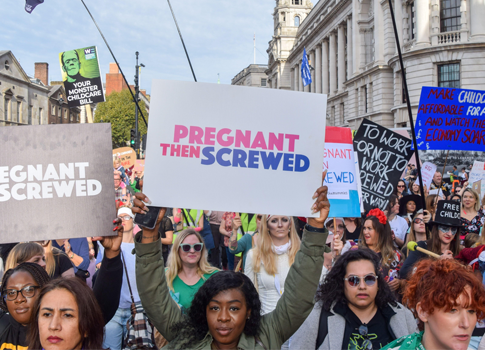With Q1 drawing to a close, it’s time to reflect on whether the trends we have seen are short term or indicative of what advertisers should expect from the remainder of 2023. From large shifts in user behaviour, to new, emerging technologies taking the media world by storm, there is one thing that is clear – if brands do not get on board with the following five media trends then they could get left behind.
The five Q1 trends to keep an eye on for the remainder of 2023:
- The rise of Chat GPT and other generative AI
- Media measurement solutions that tackle the problem of attribution in the era of consent
- The ever changing search landscape – going beyond the ‘search engines’
- The stuttering ascent of the Metaverse and the rapid rise of Retail Media
- The importance of understanding user behaviour
1. Chat GPT – Is it all hype, or is generative AI here to stay?
Just two months after its launch, Chat GPT has reached 100 million global users. With such an accelerated growth and large user base, the urgency among advertisers to utilise its capabilities is understandable. However, not everyone is thrilled with its arrival. There are questions around whether generative AI is here to assist Digital Marketers, or replace us all together…
In my opinion, these AI tools will not threaten our jobs, but enhance them. From improving our creative operational efficiencies, to advancing our campaign planning and activation processes, these tools will become an essential part of a Digital Marketer’s skill set. This will not only benefit the individual, agencies, and industry, but our clients, as automation allows for more time to be spent on innovation and strategic planning.
We have already begun to see its impact on our industry in the search landscape. Microsoft has challenged Google’s dominance for the first time in years with their newly launched AI-powered Bing search engine and Edge browser in partnership with ChatGPT, which currently has 100 million daily users. While not a patch on Google’s one billion users, it has allowed Bing to finally challenge Google’s substantial market share and capture the attention of advertiser’s budgets. Whilst it took a little longer to release, Google’s Bard saw a release late this month, the same day Microsoft announced that Bing Image Creator will be part of the new Bing and allow users to create imagery based on prompts. This one day of releases illustrates the rapid pace that these tech giants are developing their AI capabilities and also the pace that we as digital marketers will be forced to keep up.
Lastly, with any successful new tool or platform there is bound to be copycats. Spotting its popularity, Snapchat has already followed Microsoft’s suit and partnered with ChatGPT to launch a new AI chatbot, in the hope to diversify their user base and drive more ad spend.
Key takeaway: AI is very much the future. However, it will not replace Digital Marketers but revolutionise our way of working. From changing the search landscape, to introducing chatbots on social platforms, AI will become an integral part to media planning in 2023 and beyond.
2. Attribution and the scramble for visibility on performance metrics
Ad budgets are expected to slow down in 2023, which has made advertisers even more anxious to understand the impact of their advertising spend. However, in ‘the era of consent,’ where user privacy is more prevalent than ever, it is becoming increasingly difficult to attribute ad spend to performance metrics due to a lack of visibility.
In order to support those buying media, as well as protect their own ad spend, both Google and Meta have been quick to launch their server to server measurement tools in Enhanced Conversions and CAPI respectively. Although this helps advertisers to measure and optimise campaigns better within the walled gardens, it is not an overall solution to the decline in visibility that advertisers require.
There are several steps that advertisers can take to combat this, however, they all come with varying degrees of cost and difficulty depending on tech stacks and digital maturity:
1. Data Driven Attribution (DDA) – a method of attribution that unlike last click gives value to the last touchpoint in a conversion journey.
- Pros: Setting up DDA carries no cost for users who are already using tech stacks from the likes of Google and Adobe, and can even be leveraged in bidding across Google Platforms such as across search campaigns.
- Cons: Despite being easy to set up, DDA is still not an attribution model used widely. It allows advertisers to monitor the value of Paid, Organic and Direct Channels only.
2. Media Mix Modelling – allows advertisers to model the value of their media investment on key metrics such as sales.
- Pros: Unlike DDA, MMM can include offline media purchasing, and will assign a value to each channel allowing advertisers to re-balance budgets and understand the ROI of channels.
- Cons: It’s more complex and costly which means it’s not widely adopted, and those that do adopt it, use it on a less frequent basis, often yearly.
3. Incrementality Testing – the process of determining the impact on an outcome when changing the input. For example the impact on sales when including a ‘TV buy’ in a campaign.
- Pros: Can be used to measure a variety of scenarios, such as adding a new channel or tactic to your media mix or increasing activity or investment. Can be used across your media mix or to test new approaches within channels.
- Cons: Defining your test and control can sometimes be difficult especially if looking to measure incrementality across Geographic regions as you search for two areas with similar populations and macro-economic profiles.
Key takeaway: Total Media can help set up both the simple (DDA) and complex (MMM) to help brands overcome measurement challenges of varying scale. Brands should already have some visibility on DDA, but now more than ever we work with clients to build media mix models to understand the impact of media on a more accurate level
3. The ever changing search landscape
Google continues to dominate in a “traditional” search sense, with a market share of 91.88%. However, in 2022, 66% of Americans started their product search on Amazon, and TikTok surpassed Google to become the world’s most visited website. Therefore, it is clear that in 2023 there is more to search than “engines”. Brands and advertisers need to ensure their products are visible in ALL the places that users search, otherwise they might get left behind.
If you’re selling a product then your approach to Amazon arguably has more importance than Google in the battle to gain early exposure in the consumer journey. There are many ways to “optimise” a brand’s presence on Amazon through both paid and organic campaigns. This includes having a fully optimised Amazon store, with a clear audience and search term strategy, to dominate more competitive environments from a paid perspective.
TikTok is also looking to help brands capitalise on the volume of searches happening within their platform. Their ‘Search Ads’ offering, which is currently in Beta, allows advertisers to appear on TikTok’s search results page. Their way of reporting also allows advertisers to see the best performing search terms and optimise their content accordingly, which presents a sizable opportunity for marketers to create much more tailored and effective videos. Understandably, however, until there is control over the search terms that brand’s can appear against it is worth treading carefully in this space.
Monitoring TikToks approach to search is particularly important for brands in the experience or service industry. It is suggested that almost 40% of young people prefer finding a new restaurant on TikTok than Google or Meta. However, advertisers should proceed with caution before putting all their paid spend behind TikTok as Google still dominates in terms of available impressions, performance efficiencies and brand safety, thanks to their automated bidding and negative audiences and key words.
Key takeaway: In 2023 search is more than just search engines. Amazon and TikTok both provide opportunities for advertisers to reach users who are in differing mind sets such as ‘ready to purchase’ (Amazon) or ‘discovery’ (TikTok). Therefore, brands should think about search from both a paid and organic perspective across each of these places to help balance investment and efficiencies to get the desired output. Here at Total Media we can help you do exactly that through our product Total Search.
4. It was supposed to be the year of the Metaverse but actually it was the year of retail media
2023 was set to be the year of the Metaverse, where AR and VR led ad formats became a fixture across media plans. However, due to relatively high barriers to entry in producing these assets, as well as the declining search interest in Metaverse over the past 12 months, this has not been the case. Ad spend, instead, continued to see rapid growth across retail media, with estimates that it accounts for 10% of media spend in 2022, which is expected to rise by 60% over the next few years.
So how has retail media and its ability to target customers across the likes of Amazon, Tesco and ASDA continued to grow? Firstly, it allows retailers to benefit from sophisticated targeting options based on demographic and intent to appear in placements where the users are in the mind set to purchase their product. For example, someone searching for toothpaste on ASDA could see an ad for Colgate. It also gives brands like Colgate visibility over the impact of their investment by directly attributing it to sales.
The retail media space shows no signs of slowing down as retailers race to offer, and ultimately monetise, the space across their site. ASOS, are just the latest retailer to make the move, partnering with Criteo to bring sponsored Ads to their site. Other exciting innovations include Tesco and Dunhumby’s partnership that will make Tesco’s 2m Clubcard users available for targeting via Citrus Ads, which not only offers online retail estate, but also permits for ad space in store to be bought programmatically.
Key takeaway: The Metaverse has not made the waves it was hoping to, whereas retail media has seen a great increase in growth which shows no signs of slowing down. However, that does not mean that the Metaverse and retail media can’t work together. We have already seen with the likes of Amazon’s try on feature how AR and retail media can combine to give brands an opportunity to drive action at all stages of the funnel. Meta may simply have to adapt and shift their offering to shopping in the Metaverse rather than ‘in real life’ if they want to keep up with consumer trends.
5. The importance of understanding user behaviour to achieve relevancy and overcome the evermore complicated user journey
Understanding user behaviour is more important than ever. The emergence of new social platforms and the ever increasing ways to consume video content has made media planning more complex. To succeed, media planners need to understand how users are spending their time. Whether watching linear TV in the evening, or scrolling through TikTok during their commute, advertisers need to ensure they are reaching users, in the right place, on the right platform, at the right time.
As a result, advertisers may need to begin planning multiple channels at the ‘awareness phase’ to account for changing user behaviour throughout the day. They also need to keep in mind that the traditional ‘consideration’ stage has changed. Due to the growing amount of information and ways to search or shop, users are taking more steps during the research process.
On top of this changing user journey is the evolution of the measurement landscape where advertisers are now facing limitations on personalisation due to new user privacy protocols. Therefore, creating a connected journey is more difficult than ever. However, when combined with a robust measurement framework such as MMM or econometrics, a behavioural science lead approach to media planning can help overcome some of these complex audiences.
We can use behavioural science to understand who your audience are. Segments can then be created to inform targeting with greater effectiveness. Understanding your audience based firstly on their offline behaviours and then their online behaviours allows for a more accurate picture of their media consumption. This means that you can tailor your media plans to where your audience is going to be, when exhibiting your desired behaviour, whilst also using personalisation at a level that will speak to solving the problem or appealing to a need that their behaviour is suggesting.
Key takeaway: Behavioural science can be the key to media planning in 2023 where user behaviour is becoming increasingly complex. Adopting a data led approach can ensure relevancy, drive results and limit budget wastage. This is something that we at Total Media specialise in. We have shaped detailed audience packs that inform targeting and drive channel selection across key platforms for multiple clients, and can help your business too.
For more information on how Total Media can help your business to grow in 2023 contact us today






